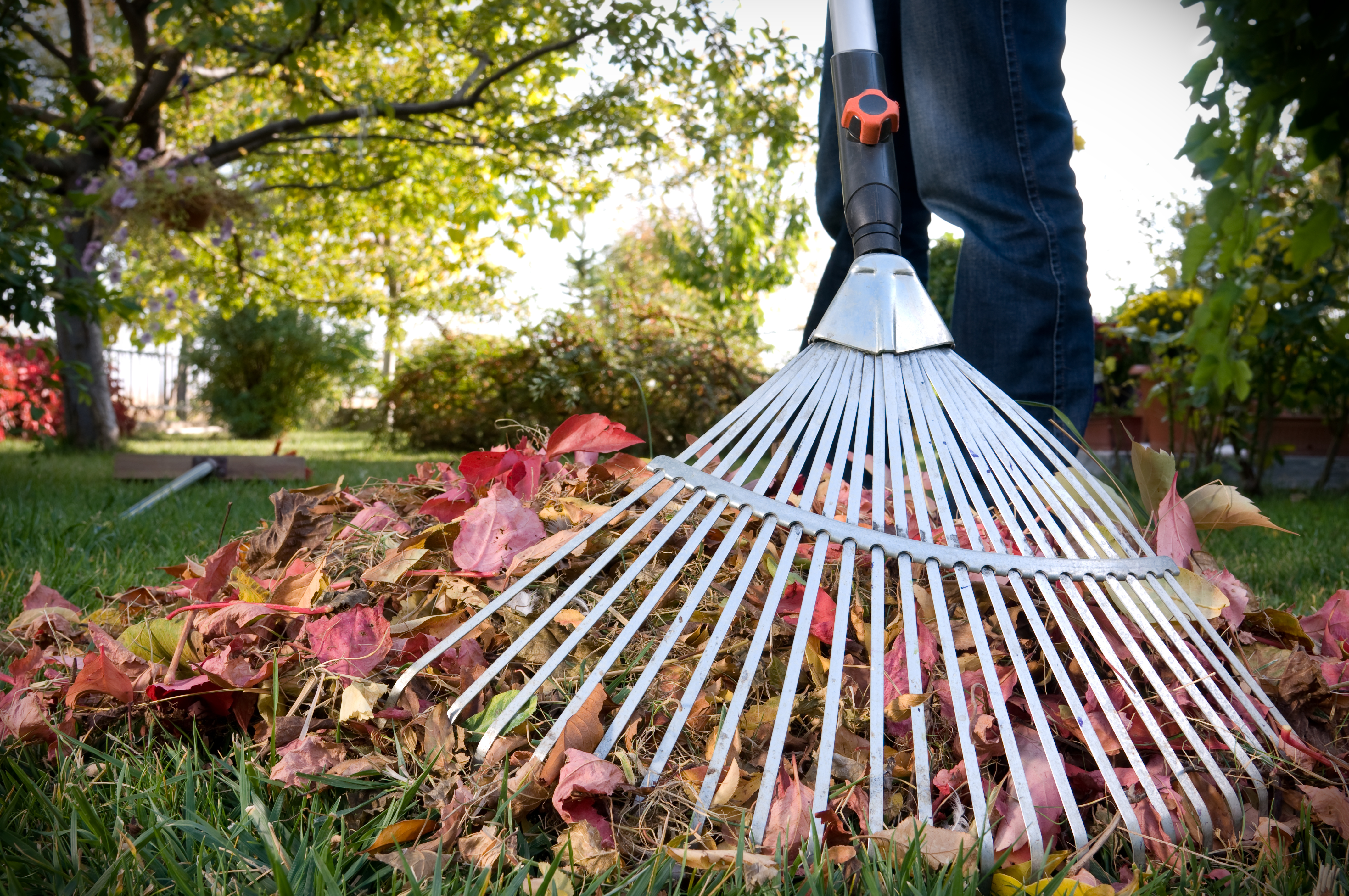
one
two
three



Just as this is the season to spring clean your house, it is the season to spring clean your garden. There are some tasks that should be done every spring to increase the chances of your grasses, perennials, trees, and shrubs doing well for the growing season. After you clean up your garden, it will be time to plant spring annuals. Here is a list of tasks to do to set your landscape up for success.
Remove Winter Debris
Remove leaves from your garden beds. You should also remove any straw, hay, or mulch you used to cover and insulate your plants. A buildup of these materials will make it hard for seedlings and perennials to reach the surface through the cover before they starve. They also provide a haven for pests to overwinter in. Now that it is spring, you want to show them the door. Similarly, you will need to either remove any leaves on the turf grass and compost them or run over them with the lawnmower to shred them and leave them to fertilize your lawn.
Prune Trees and Shrubs
It is time to prune trees and shrubs that have flowers on new wood. Prune out damaged and dead branches on all trees and shrubs. Be careful, though, as some branches may look dead after the bad winter storm but will put on new growth if you allow them to. If you are in doubt about a branch, very lightly scratch the bark off at the end of the branch. If you see a layer of green, the branch is still alive. Do not prune more than 1/3rd of the tree or shrub or you will injure it by over pruning. Do not compost trimmings from trees and shrubs as they might have diseases or pests that will contaminate your compost pile. Bag the trimmings and throw them in the trash. If they are too large to bag, cut into smaller pieces.
Cut Back Perennials
Just as you prune trees and shrubs, you need to cut back perennials. Perennials need to have diseased, dead, and damaged parts of the plant cut off so that they do not become infested with diseases and fungi. Remove leaves, shoots, and stems from the very bottom of the plant. Cut perennials to a few inches above the soil level if they bloom on new wood. If they bloom on old wood, wait until just after they have their flowers to cut them back. Bag the trimmings and throw them out.
Spring Ornamental Grasses Care
Ornamental grasses will benefit from being cut back in the spring. Cool season grasses need to be cut back early in the spring, when the snow and ice melt. Leave 1/3rd of the plant or you can damage the grass and it will always have problems. Warm season grasses need to be cut back to the ground, or no more than a few inches tall in mid to late spring. Before you begin trimming a grass, put on some heavy leather gloves as grass blades can be very sharp and will cut you badly. You can compost healthy grass clippings. Throw away sick or pest-ridden ones.
Every few years, ornamental grasses benefit from being divided in early spring. This involves digging up the plant by the roots and cutting it into smaller pieces. Make sure each piece has a section of roots. You then leave part of the plant there and plant the other pieces other places in your landscape or give them away. This reinvigorates the parent plant and gives you more grass plants for free.
Mulching Protects Your Plants
As one of your last steps, mulch all your garden beds, your trees, and your shrubs. Mulch soaks up water and releases it slowly to keep your plant hydrated between waterings. It also keeps the soil cooler in hot temperatures and keeps it warmer in cold weather. Finally, it helps keep weed seeds from growing in your garden.
Mulch should be three inches deep when you first put it down. Every year after that, add an inch of mulch to the top of the old mulch. Mulch breaks down during the year and loses about an inch in height each year. As the mulch breaks down, it fertilizes the plants around it. Do not mulch where you have planted seeds until they have sprouted. When they are over an inch tall, put down an inch of mulch. As they continue to grow, increase the amount of mulch until you have three inches of mulch in total. Do not let mulch touch the bark of trees and shrubs or they can rot. Leave a space around the trees and shrubs to prevent that. Leave at least a 4-inch space between the top of your mulch and the bottom of your siding. Some pests, especially termites, use the mulch as a bridge to reach your house and chew on it.

After the Clean-Up
After your garden is cleaned up, there are a few last tasks to do. Apply a slow-release fertilizer before mulching such at 13-13-13 or osmocote to provide essential nutrients for your plants. Spring is also a good time to apply a pre-emergent on top of the mulch to help prevent weeds. Make sure not to spread pre-emergents where you have planted seeds, or want to, or it will kill them. Both the fertilizers and pre-emergents work best when watered in after applying. Once it gets closer to Mother’s Day the threat of freeze usually passes and you can begin planting annual flowers such as begonias or petunias to add those pops of color to your garden.
Getting Help with Spring Cleaning in Your Landscape
Some people really like spring cleaning in their landscape. Others do not have the time or inclination to do so. Royal Creations Architectural Landscaping can do your spring cleaning for you and get everything ready to shine. If you enjoy the result, but not the process, of doing these spring tasks, contact Royal Creations today and we can set you up on our Garden Care Subscription plan so you can spend more time with your family and less time with weekend chores.